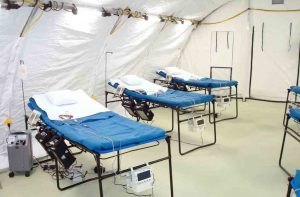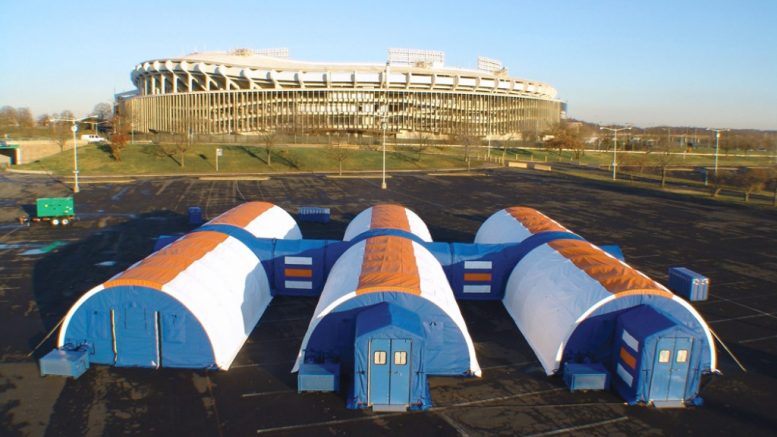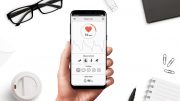Coronavirus cases in the United States are at an all-time high, reaching over 125,000 new cases per day. When the pandemic hit the country in March, hospitals were running out of room to treat patients. So what are they going to do now that the country has quadrupled in cases since that time?
Fortunately, healthcare professionals started using an alternative way to test and treat patients. Instead of increasing the risk of exposure by bringing all patients into the hospital, they have found a way to keep them outside. They are using medical tents to hold incoming patients.
History of Medical Tent Usage During Coronavirus
Back in April, both Pennsylvania and New York City hospitals were using this method. Penn Presbyterian Medical Center doctors had to take proactive measures to prevent their staff from feeling overwhelmed by the increasing number of patients.
Along the way, they started to add more tents outside their medical center. They ended up making a beneficial impact.
New York City, the epicenter of the virus at the time, had little space to work outside of their hospitals. So, they decided to create a field hospital in Central Park.
There, they could pitch tents and set up an electrical system to hook machines up to. Additionally, they added a sanitation area to clean personal protective equipment.
This system proved to be effective. New York healthcare professionals were able to keep a significant amount of patients in the field hospital rather than sending them to the overwhelmed hospitals around the city.
Now, healthcare organizations and government officials all across the nation are using various kinds of medical tents to treat patients. As cases go back up, there might be an increase in medical tent usage.
Why Use Medical Tents to Treat Patients?
The biggest reason is to limit exposure. When patients are indoors, it is easier for the water particles from the mouth and nose to spread. Doctors found a drastic decrease in particle transmission when they kept patients outdoors.

BLU-MED ICU Tent
Not to mention, doctors can treat patients quickly when using a tent. Shortening the time patients spend in the tent minimizes everyone else’s risk of exposure. By keeping a pharmacy in the tent, you can send patients straight home afterward.
Furthermore, doctors can sort patients by the severity of their symptoms in the tent. This sorting prevents an unnecessary number of people from being in a hospital that’s already full.
Say a patient has tested positive for COVID-19, but their symptoms are mild. Seeing they do not need medical treatment, healthcare professionals can tell this person to go quarantine.
Types of Medical Tents
Using COVID medical tents doesn’t mean that medical professionals have to go without the tools they need to best treat patients. BLU-MED Response Systems® creates high-end products designed for pandemics. All their medical tents can be designed to meet specific wind and snow loads.
Use the deployable field hospitals in places that need serious help in dealing with coronavirus patients. It comes with optional HVAC, electrical, and lighting systems.
Field hospitals come in many sizes, depending on how many portable ward beds are needed. They come with a range of 15 beds to 200 beds.
Hospital surge facilities are intended to be used when there is a sudden influx of patients at a hospital. They were made for category C isolation units, are climate-controlled, and can be anywhere from 650 square feet to 65,000 square feet. Using the hospital surge and isolation capacity accommodation will make it easier to manage patients who need COVID-19 care.
As to not expose other areas of the hospital to an airborne disease, negative pressure isolation rooms prevent their air from escaping when a healthcare professional enters. These tents are necessary. They allow doctors to separate high-risk patients from low-risk or non-COVID patients.
The negative pressure isolation rooms BLU-MED offers have their own filtration system, an adjustable pressure sensor, and isolation partition that allows healthcare professionals to see patients without going in the room. They can hold anywhere from 15 to 200 portable ward beds.
Given the number of deaths caused by the coronavirus, hospital morgues were filling up quickly. BLU-MED’s 650 square foot deployable morgue systems can hold 24 victims. The tent comes with its own electric system, heating, ventilation, and air conditioning.
Treating Patients Differently
Tents are not only for field hospitals. Stadiums, store parking lots, and parks are holding drive-through testing centers. These centers have proved to be an effective way to distribute tests to the public. They will eventually become places for the public to get a vaccine.
BLU-MED Response Systems and Alaska Structures created a 21 ft. wide, 21 ft. long drive-through tent with a maximum height of 11 ft. 3 in. It is large enough to hold two cars at a time and can withstand any weather, just like their other products. A trained team of four people can set it up in half an hour.
The Ongoing Battle Against COVID-19
Medical tents will continue to act as a key player in supporting coronavirus efforts. Get a quote on any of BLU-MED Response Systems’ products today. Join the medical facilities and health care organizations across the globe in fighting the pandemic.
Feature by BLU-MED Response Systems





